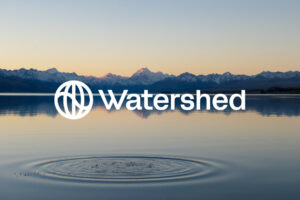In our recent guest article, Prof. Christian Heinrich, Co-Founder and Managing Director, carbmee, described “the 80% challenge” faced by manufacturing companies . The vast majority – namely, 80% – of the carbon emissions from manufacturing companies fall under Scope 3 carbon emissions, indirect emissions caused by suppliers of various inputs to a company’s operations, such as steel, iron, electricity and fertilizer. Meaning that only 10% – 20% of manufacturer’s carbon emissions fall under Scope 1 and Scope 2 decarbonization targets, or emissions that come directly from the company. This creates a challenge for manufacturing companies to feel in control of their decarbonization efforts and ESG goals.
In this follow-up article, let’s discuss some practical ways companies can integrate measures within their source-to-contract processes to reduce your Scope 3 emissions.
Prof. Heinrich focused on recent developments in the regulatory field, notably The Carbon Border Adjustment Mechanism (CBAM), which essentially serves as the “stick” to encourage decarbonization. But in addition to this, the very large “carrot” dangling in front of manufacturing companies is consumer power and the need to win and retain consumer trust.
Even in the recent times of high inflation, consumers care about sustainability, mostly because the negative impacts of climate change are becoming ever-more apparent. According to PwC’s 2024 Voice of the Consumer Survey, “while cost-of-living pressures weigh, some consumers say they are willing to spend 9.7% more, on average, for sustainably produced or sourced goods, as almost nine-in-ten (85%) report experiencing first-hand the disruptive effects of climate change in their daily lives.” Moreover, a “smaller but still considerable number (46%) also say that they are buying more sustainable products as a way to reduce their personal impact on the environment.” Consequently, two of PwC’s six “trust imperatives” for companies are sustainability related:
- Forge bonds with eco-conscious consumers by connecting their intentions to positive environmental impacts.
- Create and promote a product portfolio that reflects consumers’ desires for wellness, nutrition and more sustainable food production.
Best practices in five steps
Managing the 80% challenge takes place in five steps in the upstream end of procurement (i.e., from source to contract).
- Spend management: It begins here in most organizations. You need a firm grip on spend management to identify hotspots, for example. But to do this effectively you must first enrich your information with data on supplier risk and ESG. As Prof. Heinrich emphasized, you need to do this at a granular level, i.e. on a per-supplier and per-transaction basis rather than aggregated spend-based.
- Category management: You can then take this enriched data and turn it into insights that help to inform and define executable category strategies. For example, by including your sustainability goals in your aggregation of cost drivers.
- Supplier management: The next step is to break down category strategies into specific actions and initiatives with individual suppliers. This might involve widening the supplier base to include suppliers who are already driving down their emissions, for example by using only green energy sources. Or even in contrast, narrowing the supply base so you can more easily monitor tier 1 suppliers’ efforts to reduce emissions. An increasing number of suppliers are now promoting their carbon efficiency as a Unique Selling Proposition (USP), shifting the market to give buyers leverage over existing suppliers to encourage them to improve performance.
- Sourcing: Category and supplier management strategies can then inform your sourcing events to include commercial costs as well as risk and sustainability factors. You can invite vetted suppliers to take part in sourcing events based on a true understanding of total cost, including carbon costs based on their actual carbon footprint (which may in turn vary depending on location of your operations etc.) Formulas in JAGGAER will calculate which is the best value offer (as opposed to the cheapest offer) considering all the information gathered for the quote. Your “best value offer” is essentially determined by your category strategy. It applies bonuses, or penalties, based on answers provided by bidding suppliers on factors such as risk and sustainability. For example, we could apply a baseline for carbon emissions. A supplier bidding for the contract that meets your carbon emissions baseline would earn a bonus. While a supplier that does not meet the carbon emissions baseline would earn a penalty, even if their bid is cheaper.
- Contract management: After supplier selection, all contract terms can be included in a robust legal framework and monitored through contract management. The terms can include baseline carbon emissions and other ESG considerations like anti-slavery and anti-child labor provisions. Ensuring suppliers can be held to account for undertakings on emissions.
Once these five upstream processes are complete, you can execute the downstream procure-to-pay processes. The former strengthens and ensures the latter can be monitored to build sustainable supply chain that meets decarbonization criteria.
What is astounding is the rate at which companies are already adopting carbon pricing into their purchasing strategies and communicating this to their suppliers. A major multi-billion euro player in the chemicals industry recently informed suppliers that they will not be included on the approved list from 2025 unless they share precise carbon footprint data about their products. The message is getting through that companies must start now if they are to meet the “80% challenge” on Scope 3 targets by 2030.
Naturally, these best practices are only practical if you have a standardized metric for all emissions, including Scope 3 emissions. This is precisely why JAGGAER partners with carbmee and directly integrates carbmee calculations into JAGGAER’s RFQ module.
Learn more about strategic sourcing: empowering decision-making across disciplines in our on-demand Video: Watch now
Find out more at www.carbmee.com




